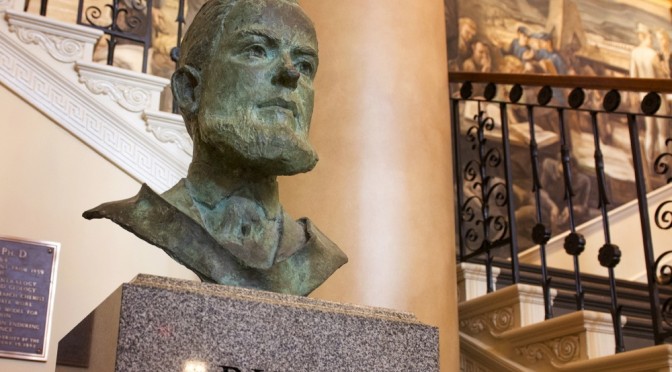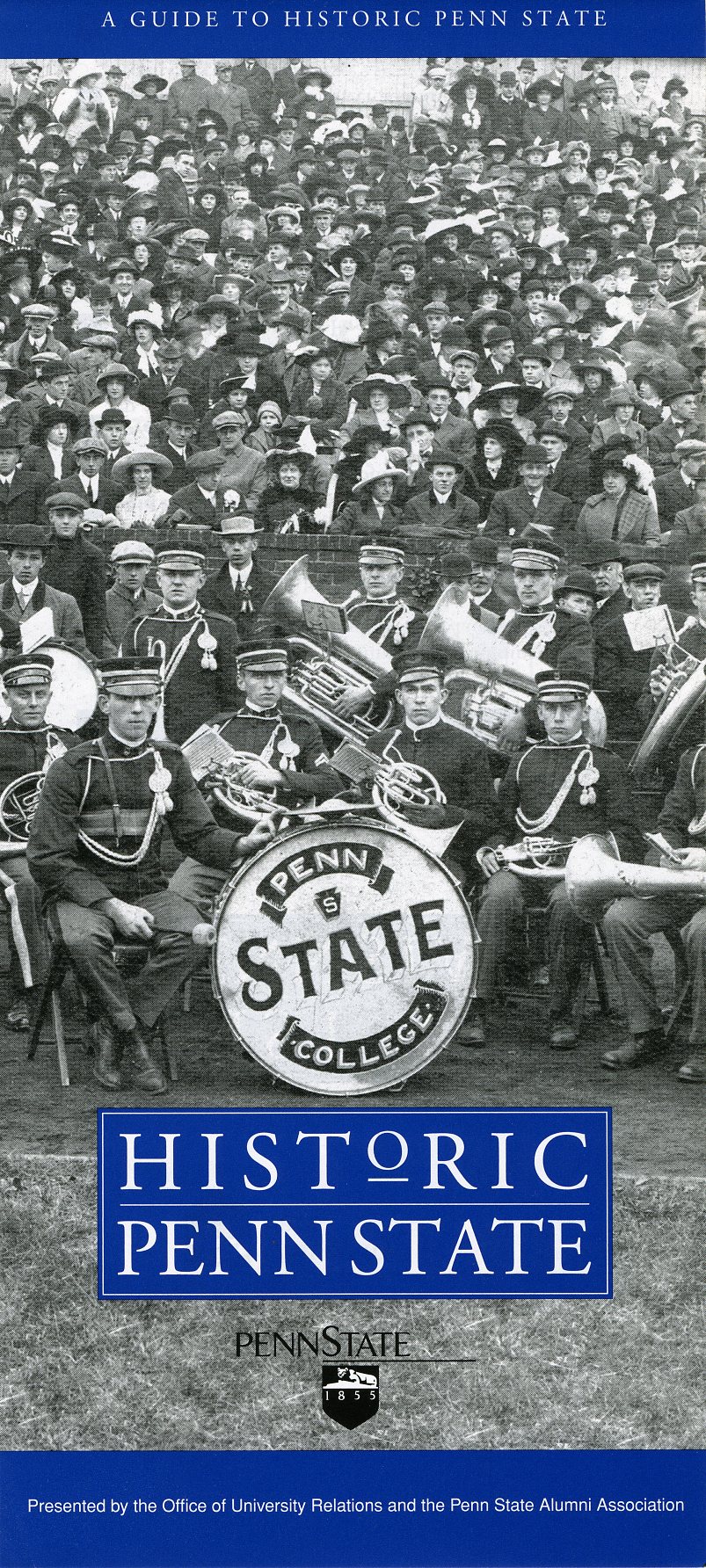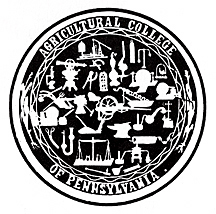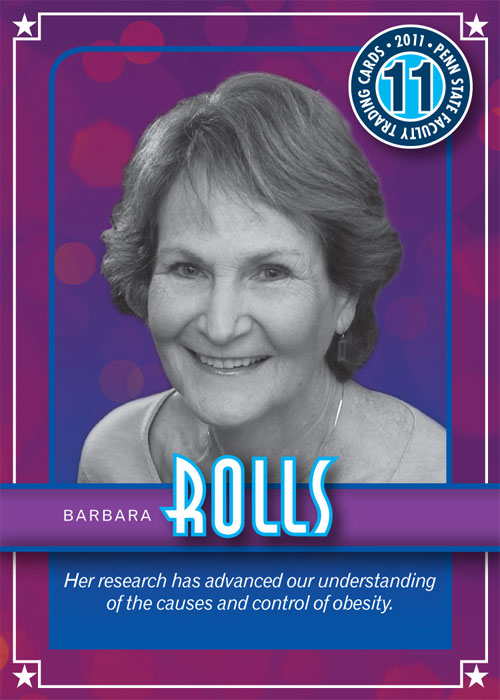Earth scientist, geographer, sociologist, biologist, musicologist, plant pathologist, electrical engineer.
Those are the academic disciplines that launched the last seven Penn State presidents on their careers in higher education. To be sure, each had transitioned to administration before taking the reigns as the University’s chief executive. But each also has left his mark as a researcher.
I started thinking about the President as Researcher when I read a biographical sketch of Eric Barron, who recently took office as Penn State’s 18th president. Barron first came to the University in 1986 as director of the Earth System Science Center. Earlier, he had been a scientist at the National Center for Atmospheric Research (NCAR) in Colorado and subsequent to leaving Penn State, he served for two years as NCAR’s director. He’s authored more than 125 peer-reviewed papers in geology, oceanography, and climate issues.
So what about other six presidents?
Barron’s immediate predecessor, Rod Erickson (2011-14), is a bit of a hybrid when it comes to scholarly research. He came to Penn State in 1977 as a geographer, the discipline in which he holds a Ph.D. But his interest in economic geography and regional economic development led to his appointment as professor of both geography and business administration in 1984. In the Smeal College of Business, he directed the Center for Regional Business Analysis and was associate director of the Division of Research. His interdisciplinary approach to research served him well as Penn State’s Vice President for Research from 1997 to 1999.
Graham Spanier (1995-2011), a family sociologist and demographer, is the author of more than a hundred scholarly publications, including 10 books. He also is the founding editor of the Journal of Family Issues, a peer-reviewed research publication.
Spanier was preceded by a biologist, Joab Thomas (1990-95). Hard to believe, but he’s the only Penn State president to have a fossilized pollen named for him. He completed his dissertation at Harvard on that pollen, now named “joabthomasii,” and his research work there and later at the University of Alabama won him international distinction as a specialist in the family Cyrillaceae.
Bryce Jordan (1983-90) is an accomplished flutist and holds a doctorate in musicology from the University of North Carolina. In the 1960s, he directed graduate studies in music at the University of Maryland, before moving into administration at other universities.
Penn State had a plant pathologist-president in John Oswald (1970-83). As a member of the faculty at the University of California Berkeley in the 1950s, his published research included such subjects as fungus root rots, plant viral diseases (particularly of cereals and potatoes) and the fundamentals of the serology of plant viruses. In 1951 he discovered the Barley Yellow Dwarf, since recognized as one of the world’s principal cereal diseases. He became chairman of the department of plant pathology at Berkeley, and then followed an administrative path for the remainder of his career.
Eric Walker (1956-70) was a Harvard-educated electrical engineer and during World War II directed that institution’s Underwater Sound Lab, where researchers helped to develop sonar. Walker moved the lab (renamed the Ordnance Research Lab) to Penn State after the war but retained its focus on national defense-related research, particularly problems related to sounds made by the propellers of torpedoes and submarines. The facility later became the Applied Research Lab and broadened its work to non-defense fields. Meanwhile Walker became dean of engineering and in 1956 was all set to become Penn State’s very first vice president for research — a post created by then-President Milton Eisenhower — when Eisenhower abruptly resigned to become an adviser to his brother, U.S. President Dwight Eisenhower. Penn State’s Trustees then named Walker president, largely at Milton’s strong recommendation.
The Penn State presidents prior to Walker were an eclectic mix of teachers, administrators, even full-time clergy. Having strong research credentials was not expected of college presidents in the long ago. Only one stands out as a legitimate scholarly researcher: Evan Pugh, the University’s founding president (1859-64).
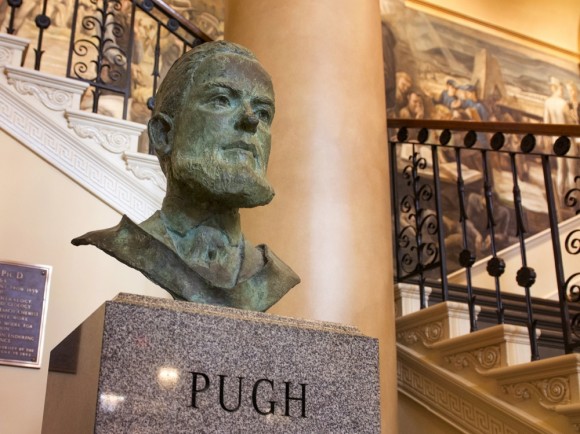
Image: Patrick Mansell
Pugh, a chemist, held a Ph.D. from Germany’s University of Goettingen. He won international recognition for resolving a debate then raging among European scientists: did plants absorb nitrogen from the air, or from the soil? Pugh proved it was from the soil. In doing so, he became “the father of the modern fertilizer industry,” as Roger Williams (executive director of the Penn State Alumni Association and a Pugh scholar extraordinaire) likes to say. Cynics might argue that the title aptly fits a college president.
Certainly fitting was Penn State’s decision in 1960 to establish the Evan Pugh Professorships, given to faculty who, among other qualities, have earned high distinction as researchers. The Pugh Professorships are the highest honor the University bestows on its faculty; only 68 have been awarded.

